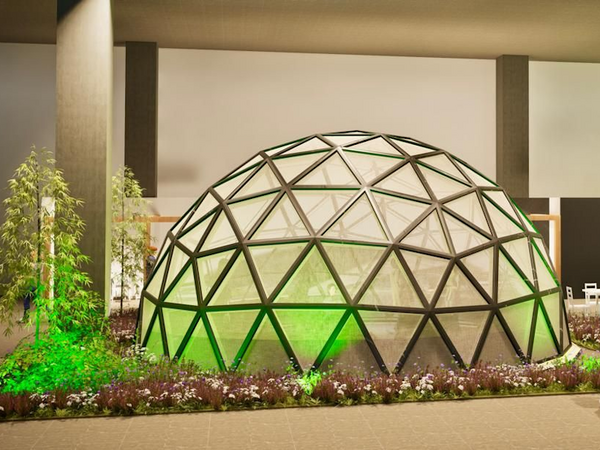Today’s consumers are showing increasing interest in surrounding themselves with plantlife. The same is also happening in restaurants, shops and hotels. While green roofs and walls, via vertical gardening, are becoming very popular, garden centres and other plant retailers have numerous opportunities to benefit from this trend. Yet it appears these are not being taken as much as they should be. EFSA members and experts Kees de Haan, Ben Boon, Edwin Meijer and Jeroen Smiemans talk about what – from their point of view – retailers need to do to capitalise on the trend.
EDWIN MEIJER
Marketing Director at Garden Connect
Successful retailers are focussing on solutions rather than products. Do customers actually want a plant, or a nice patio? Are they looking for a container, or do they want to cheer up their living room? Offering ready-to-use solutions is a necessity. You can’t afford to just be a warehouse full of products. Garden centres need to offer easy solutions, like Hello Fresh does in the food industry. Most garden retailers are still focusing on individual products while startups are trying to disrupt the industry. Bloomon is offering a subscription-based bouquet service. Plantsome is selling plants with a useful service app that tells you how to look after them.
These are small initiatives. But most big brands were small when they first started. It might sound difficult, but successful retailers are the ones who dare to do things differently. What’s your unique selling point? Why should I buy from your garden centre and not from Amazon? How do you deliver a top-notch experience both online and offline? Focusing helps retailers to become successful. Only 1% of retailers manage to get everything 100% right. So turn your mind to ask yourself what solutions you can offer your customers. How can you help them online and offline? What makes you different from Amazon? Find the answers and you’ll be on your way to achieving your ambitions.
BEN BOO N
N
Sales and Marketing Manager at Thermoflor
As the leading garden centre builder in Europe, our job is to visit many stores and speak with gardening industry business owners. Our discussions cover everything from buildings and facilities to industry trends and developments. After all, buildings have their part to play in changes to retail behaviour and trends, and should contribute whenever possible. We try to design buildings that are trend-proof for the foreseeable future. A trend I’m currently encountering is the establishment of larger stores with even more entertainment, to counteract the cold, sterile nature of online shopping.
Two decades ago we were talking about garden centres being “an afternoon out” or even a daytrip. This has taken on a new relevance in 2019. Consumers need a good reason to come to your store and business owners have to offer it. Alongside this, you absolutely have to pay attention to what’s going on in the hospitality industry, where the coffee machine has been replaced by the WMF, a cup of coffee has become a Latte Macchiato and a ham sandwich is now a carpaccio baguette. Furthermore, the store must be beautiful and needs to feel good. Everything has to be right: staff, products, interior, hospitality, social media, advertisements and... the plants of course. Plants have to return to being the common thread in the garden store. These are the heart of the industry and where garden centres must be dominant. Possessing drive and having the ability to create a good store set-up are prerequisites for a successful retailer. But the willingness and ability to respond to changing circumstances are also essential. If you continue to do the same as 10 years ago, you may not last much longer. Embracing change is the key to being future-proof.
JEROEN SMIEMANS
Director at Smiemans Projecten BV 
Continuing growth in the garden retail market suggests that garden centres have a promising future ahead. This isn’t just down to favourable weather conditions. A significant increase in social awareness about climate change and environmental issues means consumers are feeling a greater need to preserve nature and surround themselves with it. It is now an established fact that having more plantlife around us improves quality of life. So all this adds up to enormous opportunities for garden centres. Successful garden centres make customers feel close to nature. Achieving this starts with how the buildings are constructed. An innovative glass construction can create complete awareness of nature and its processes, with people being able to feel the natural ventilation, see the movement of the clouds and experience the seasons.
Smiemans calls this nature-inspired design “biophilic building”. The term derives from the word biophilia, meaning a human affinity with nature, and the practice adds 5% to a building’s value. Integration of plantlife leads to intelligent solutions such as natural climate control and better water management. Natural, biophilic elements inside a store evidently create a feel-goodexperience. By offering a sustainable, pleasant and prosperous environment, owners encourage customers to stay longer in store. Garden centres are currently getting bigger and more diverse, incorporating restaurants, florists, local farm shops, areas for indoor and outdoor plants and more. All of these open up opportunities to make stores more entertaining and exciting, without compromising on comfort and retail space. For example, you could have a “convertible” greenhouse with a corridor in which customers can make an “extra and cheaper connection with nature”. That’s a physical connection that not even the most advanced virtual store can offer.



